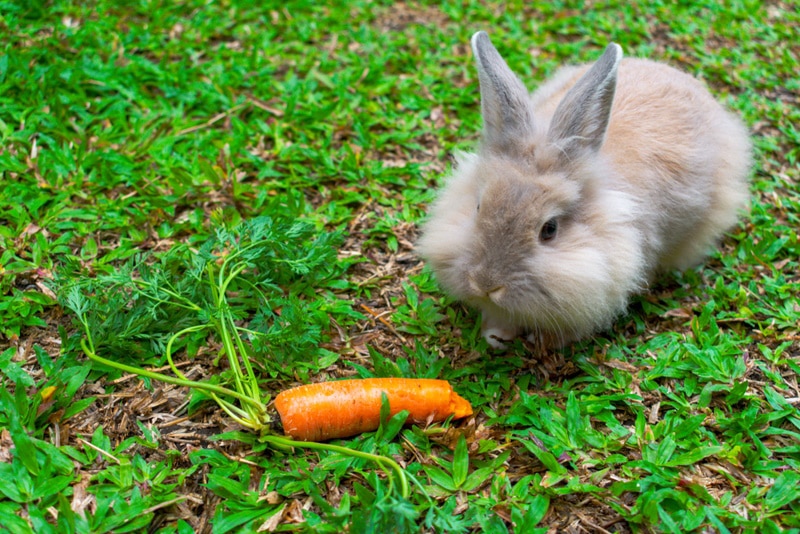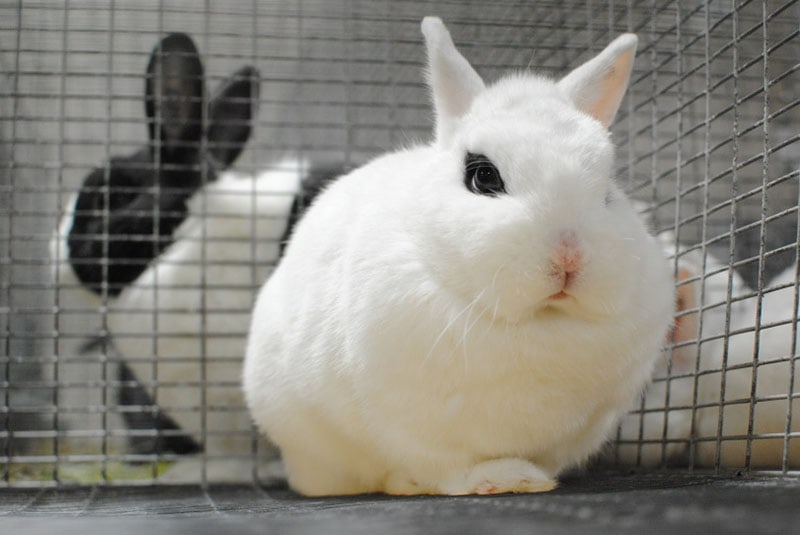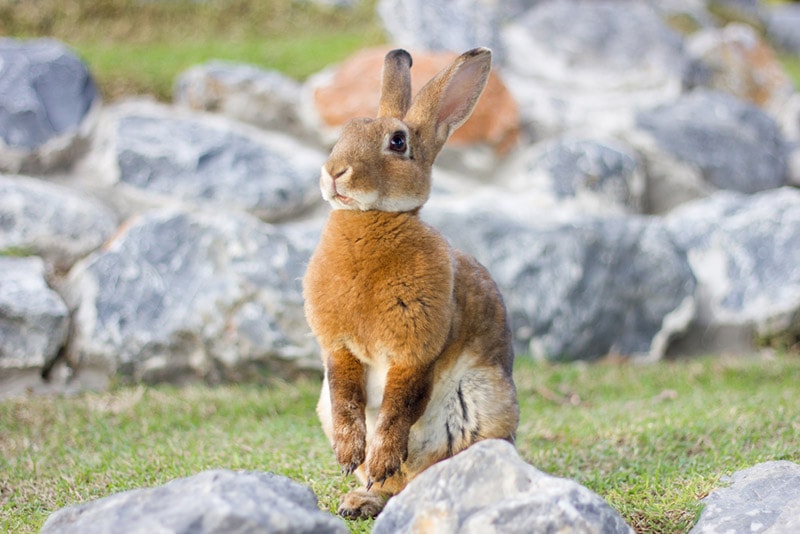When Do Rabbits Stop Growing? Vet-Reviewed Life Stages & Size Guide
Updated on
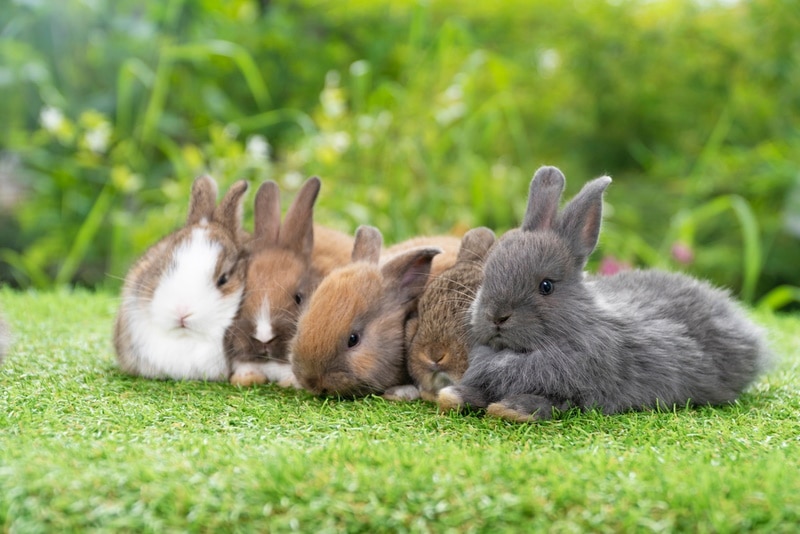
Do you have a baby rabbit and are wondering when it will stop growing? The answer depends on several factors, including your rabbit’s breed, family genetics, and care (nutritional intake, for example). However, it can range from as little as 4 months up to 18 months, depending on the breed.
Below, we look at the life cycle of a rabbit, how the factors above play a role in how quickly your rabbit matures, and some examples of when certain rabbit breeds reach their mature size. Let’s dive in!
The 4 Life Stages of Rabbits
To better understand when rabbits stop growing, it’s important to understand the various life stages of a rabbit, from when they are born to when they reach adulthood and their senior years.
1. Kit
Rabbits are babies (kits) while they still rely on their mother’s milk for nutrition and aren’t weaned, which is the first 8 to 12 weeks. While in earlier stages of kit-hood, their growth depends on the nutritional value of their mother’s milk, so it’s vital that the mother receives the best food and supplements. They also rely on their mother for warmth during the first few days of life, as they are born naked and blind. As they slowly begin to gain independence, they still rely on their mother for milk but begin eating solids as well.
2. Juvenile
Most of a rabbit’s growth occurs during adolescence, from the time they are weaned to about 1 year of age, depending on their breed. A rabbit in this age group is considered a juvenile. They’ll need adequate nutrition during this time to support their quick growth and impending shed (they shed a few times before reaching adulthood). A specially formulated pellet feed plus high-quality hay is an excellent diet for adolescent bunnies.
As juveniles, they aren’t as big as adults; however, they no longer rely on their mothers for food or warmth. Their mother won’t let them suckle once she’s weaned them. She will also likely chase them away, especially if she’s tending to a new litter of kits.

3. Adults
Once a bunny has reached adulthood, their growth has slowed considerably or completely stopped. They’ve likely reached their fully grown size by this point. The age at which this happens depends on several factors, including their breed and genetics. An adult rabbit requires a healthy diet but not as much food as a rapidly growing juvenile, so it’s important to monitor their weight and calorie intake.
4. Seniors
Most rabbits are considered senior at about 5 years of age. Unlike cats and dogs who have specially formulated food options starting at a specific age, many rabbits don’t have senior-formulated food. Instead, most rabbit owners work with their veterinary specialists to work out the best diet for their rabbits based on their overall health and diet needs.
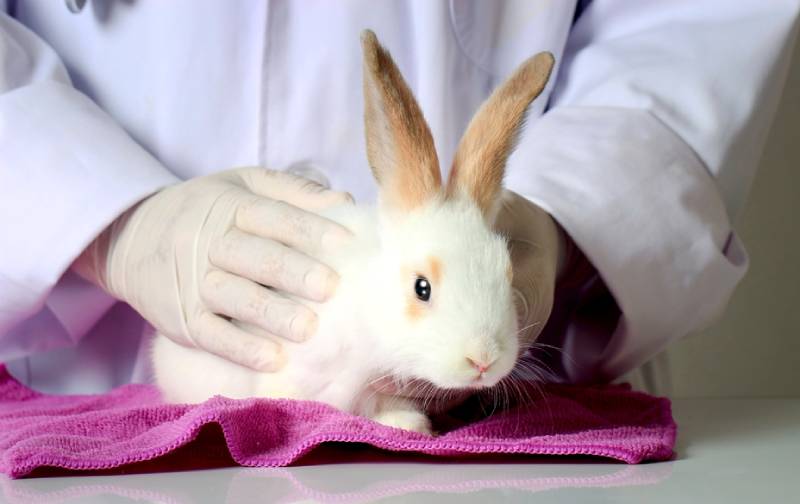
When Will Your Rabbit Stop Growing?
Every breed of rabbit will reach mature growth at a different age. Let’s look at a few of the more popular breeds to see when you can expect them to reach their full grown size.
Rex Rabbit
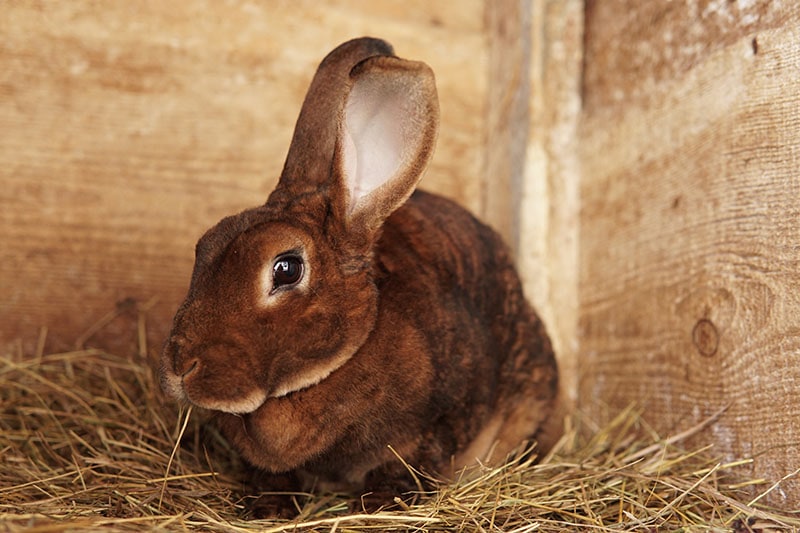
Rex rabbits are quite popular for their soft, plush fur and ears that stand erect. They are medium-sized, typically weighing between 7 to 11 pounds (3.2 to 5 kilograms) when fully grown (females are heavier), and reach this weight at around 8 to 9 months of age. If you have a mini-Rex rabbit, they will reach about 4 to 5 pounds (around 2 kilograms) at about 7 months of age.
French Lop Rabbit
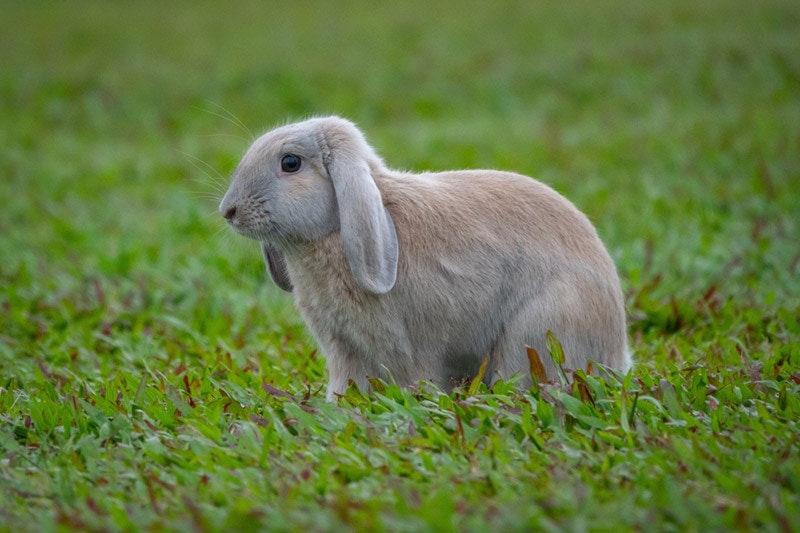
A French Lop rabbit is one of many that have distinctive “floppy” ears. They are one of the most popular breeds, dating back to the 1800s when they went from meat animals to companions and then a show breed. This particular breed is on the larger size, weighing between 10 and 15 pounds (4.5 to 6.8 kilograms) when fully grown and reaching their full potential in just 9 to 10 months.
Holland Lop Rabbit
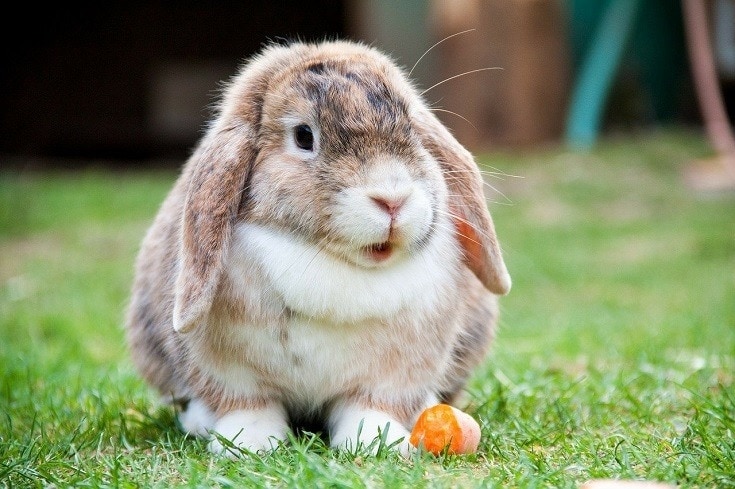
Holland Lops look like miniature versions of their French Lop cousins. They are also much newer, having been recognized in 1979. Because of their smaller, more manageable size and more active personality, they are very popular as pets. They usually weigh between 3 and 4 pounds (under 2 kilograms) and grow very quickly, reaching mature size by 7 months.
Netherland Dwarf Rabbit

The Netherland Dwarf is one of the smallest domestic rabbits, weighing between 1.1 and 2.5 pounds (just over a kilogram) pounds as adults. They reach full size in only 4 to 5 months, meaning they mature quickly, but they must be handled carefully as they are also fragile in their small size. The breed originated from a genetic mutation that caused dwarfism and has been used to create miniature varieties of other breeds since then.
Angora Rabbit
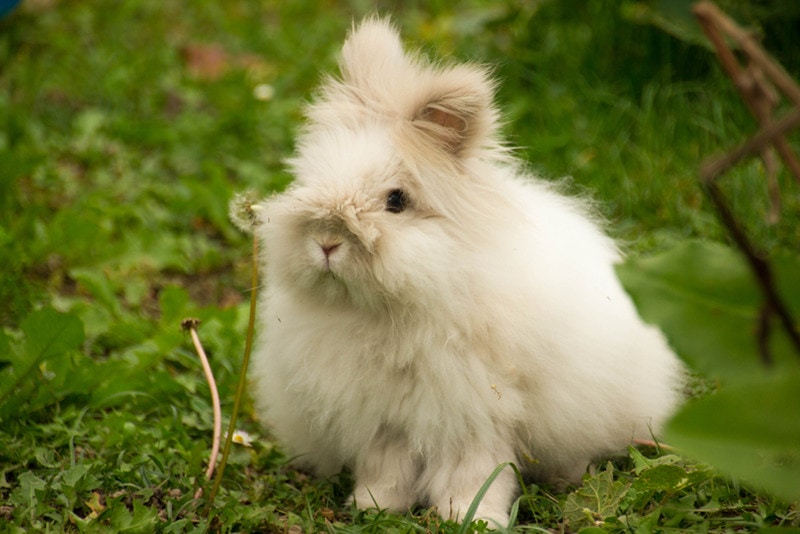
Angora rabbits are quite distinctive with their luxurious coats of fluffy angora-like fur that grow quickly and need regular brushing. A regular Angora rabbit reaches an average weight of 8 pounds (3.6 kilograms) in around 8 months. However, a giant Angora rabbit can weigh 16 pounds (over 7 kilograms) or more and won’t stop growing until they are around 18 months old.
Flemish Giant Rabbit
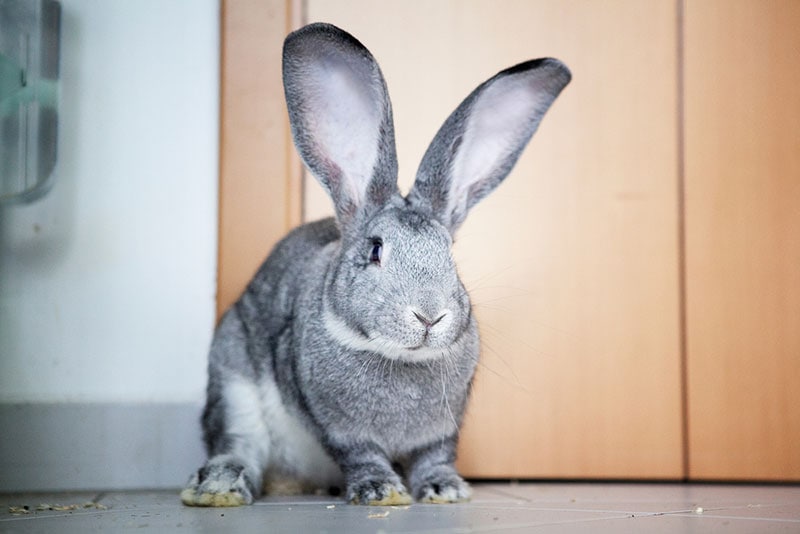
The Flemish Giant rabbit is quite popular for its size, just like the giant Angora rabbit, but needs much less grooming. They typically weigh between 15 and 17 pounds (6 to 7.7 kilograms) but have been known to weigh well over 20 pounds (9 kilograms) in some cases. Just like the Angora rabbit, the Flemish Giant rabbit doesn’t stop growing until around 18 months.
 Factors that Affect a Rabbit’s Size
Factors that Affect a Rabbit’s Size
You will need to consider several factors when determining how big your bunny will get, including their breed, genetics, and nutritional intake as they grow.
Breed
How big your bunny will get depends on several factors, the biggest of which is their breed. Rabbits come in a variety of breeds, from dwarves that weigh only a couple of pounds to giants that could weigh 20 pounds or more. It’s important to research your rabbit’s breed so you know what to expect in terms of their size as well as nutritional needs as they grow.
Nutrition
Having the best nutrition as they grow as an infant and adolescent means that your bunny will likely grow big and strong, plus have the best chances for a long and healthy life. Be sure that the mother has the best pellets, alfalfa or other good-quality hay, and supplements throughout gestation and suckling. Then, offer your baby rabbits the best quality food once they are weaned to make sure they reach their maximum fully grown potential.
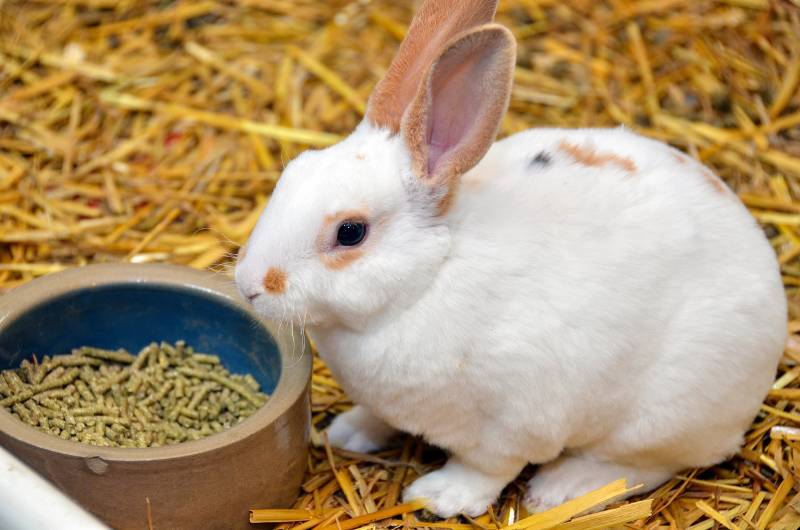
Genetics
A bunny gets some of its characteristics from its parents and other closely associated relatives, just like family history plays a role in human genetics. If both of a rabbit’s parents were very large, it’s safe to assume that your bunny will be large as well. If you don’t know your rabbit’s genetics, you might not be able to guess their fully grown size, but knowing this information can be helpful.
Conclusion
As you can see, the answer to when a rabbit stops growing is different for every rabbit. However, you can use the information above to estimate when they will reach maturity and how big they will get based on their breed, genetics, and the quality of their care.
Featured Image Credit: Kaewmanee jiangsihui, Shutterstock


 Factors that Affect a Rabbit’s Size
Factors that Affect a Rabbit’s Size